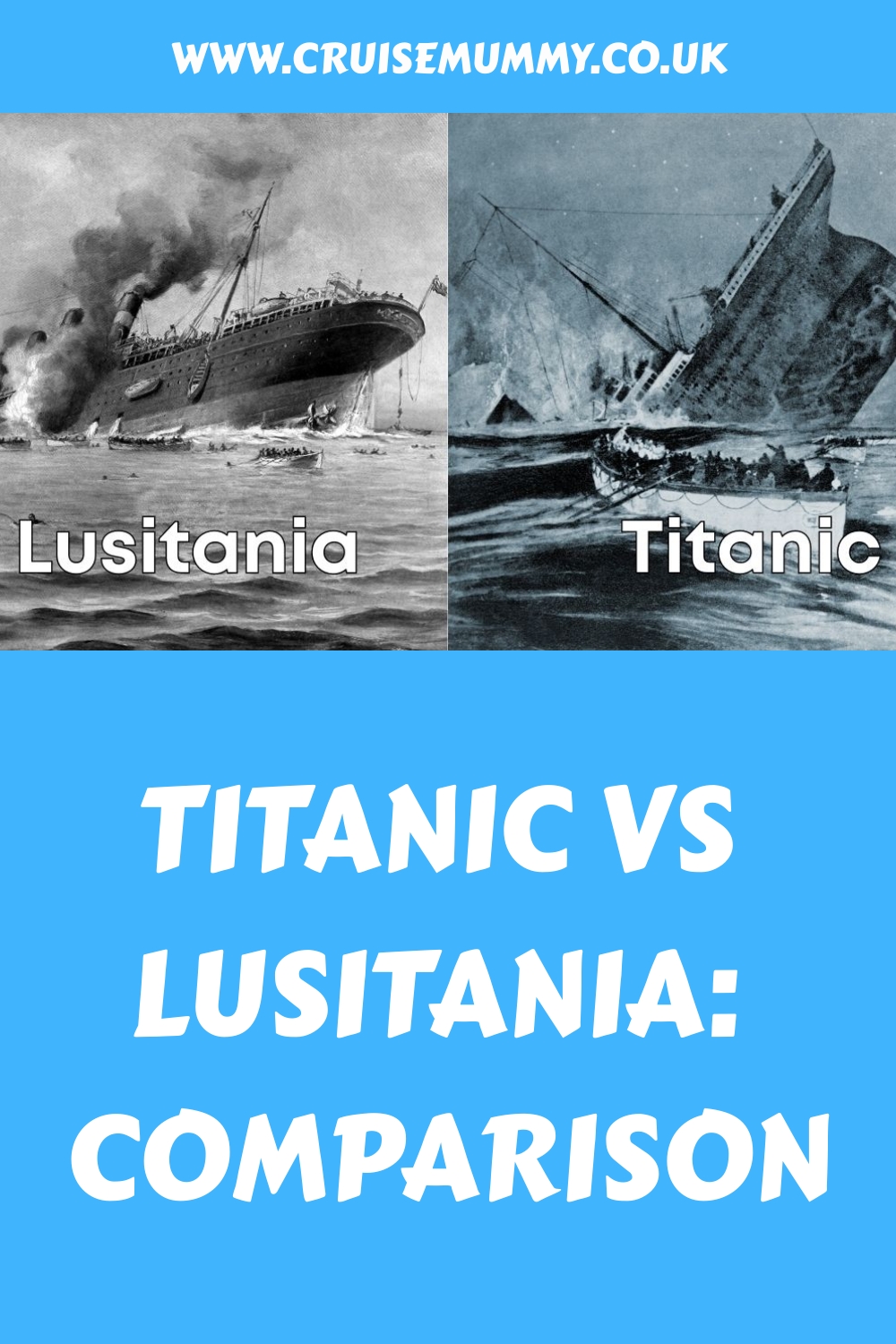The Titanic and the Lusitania are two ships with tragic stories – but only one became a household name.
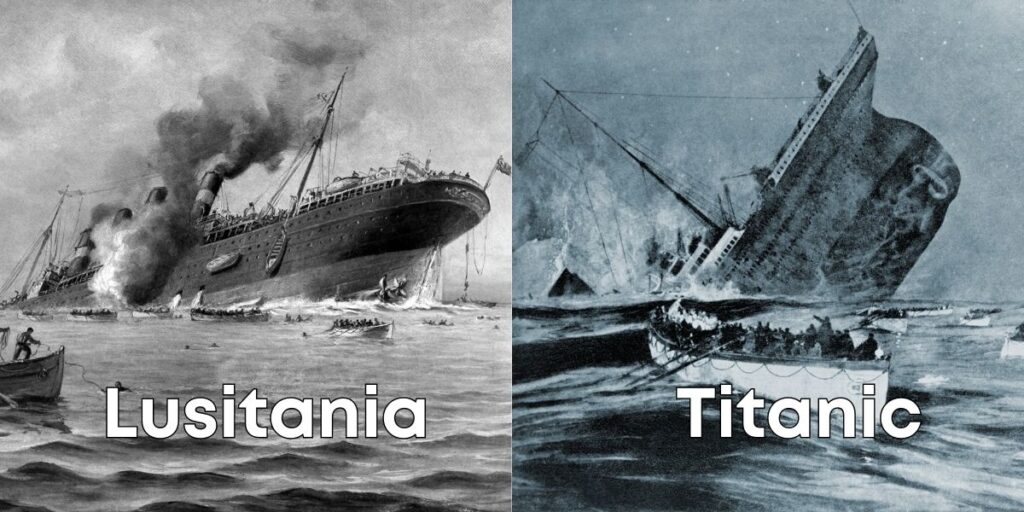
They were both luxurious ocean liners, both built in the early 1900s, and both met devastating ends. So why does everyone know the Titanic, while the Lusitania often fades into the background?
The answer lies in the details – and the differences might surprise you.
The similarities between these two ill-fated ships
The Titanic and the Lusitania were both the largest ships in the world when they first launched, and both were designed for luxury travel across the Atlantic Ocean. Both ships sank in the 1910s and in each incident, there was a severe loss of life.
The ships were not identical, and they weren’t sister ships despite some people thinking so. In fact, they could be considered rivals.
Lusitania was built in 1906 for Cunard Line (yes, the same cruise company that exists today) while Titanic was built five years later for the competitor White Star Line.
Both were British companies, looking to establish a dominant position to ferry guests from Europe to the US and back. And they tried to do so by building the biggest ships in the ocean at the time. Lusitania came first, but she was later surpassed by Olympic, the sister ship of Titanic.
Size of the ships
Titanic was the bigger of the two ships. Lusitania launched as the biggest ship in the world in 1906 but Titanic took the record when she launched in 1911, a few years later.
This means that Titanic sank as the biggest ship in the world, but Lusitania sank when other larger ships were still sailing.
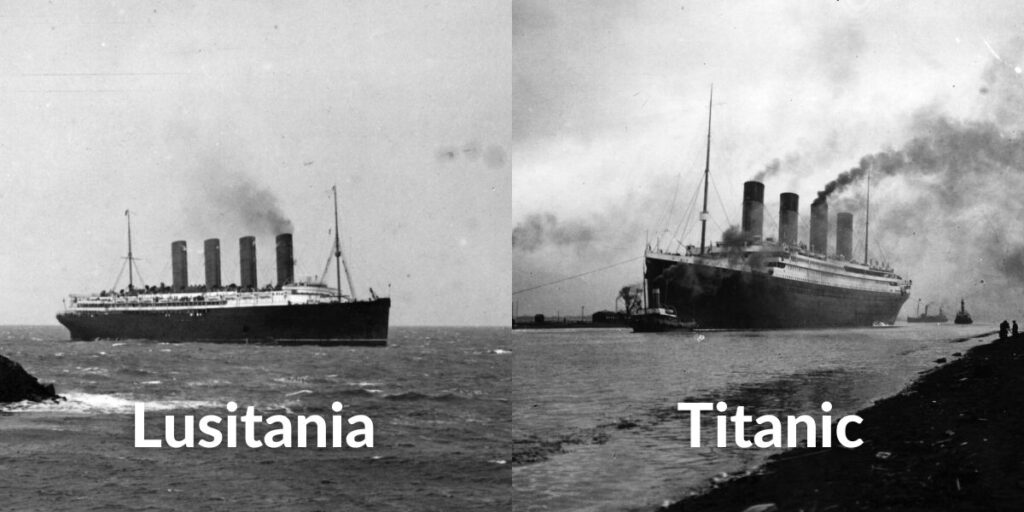
Let’s look in more detail at the statistics of both ships:
| Measurements | Titanic | Lusitania |
|---|---|---|
| Length | 882 feet | 787 feet |
| Beam (width) | 92 feet | 87 feet |
| Gross tonnage | 46,328 GT | 31,938 GT |
| Maximum capacity (passengers and crew) | 3,327 | 3,048 |
| Maximum passenger capacity | 2,453 | 2,198 |
| Crew | 874 | 850 |
| Lifeboat capacity | 35.4% | 100% |
| Maximum speed | 22 knots | 25 knots |
By every measurement, the Titanic was a bigger ship. She was 12% longer and almost 6% wider. But more importantly, she was over 45% larger in total when you consider gross tonnage, which measures the internal volume of the ship.
That stat becomes even more interesting when you realise that she was only around 9% larger in terms of total capacity. While yes, Titanic did carry more passengers, she also had more space for passengers to enjoy, as there was a higher ratio between passengers and volume of the ship.
We of course know that lifeboat capacity was one of the major issues of the Titanic, and I’ll touch more on her legacy below.
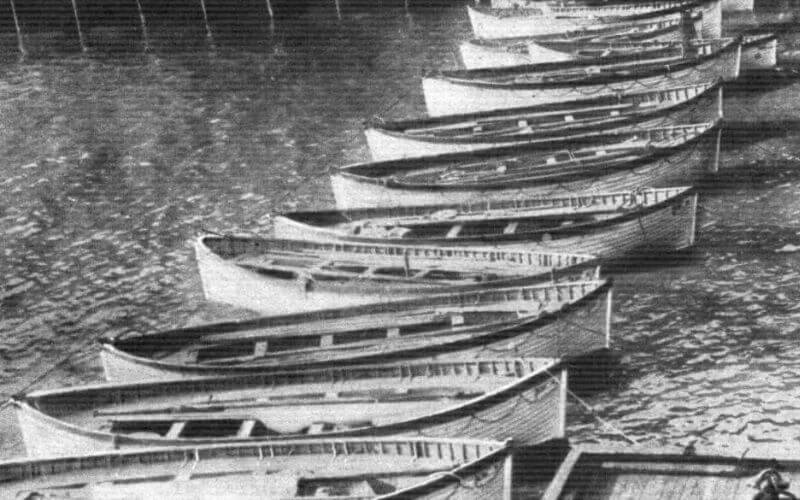
But an interesting final note is that, despite being launched six years later, Titanic was actually slower than Lusitania. Lusitania could complete a transatlantic crossing between 12-24 hours faster than the Titanic could.
This was a conscious decision when building Titanic. The aim was to focus on luxury in lieu of speed, and Lusitania’s fuel costs were apparently very high due to the amount of coal needed to reach those speeds.
Sinking incidents
Here’s a quick look at the sinking of both ships:
| Facts | Titanic | Lusitania |
|---|---|---|
| Sinking date | 14th April 1912 | 7th May 1915 |
| Number of years the ship had been sailing before being sunk | Less than one | 8 years |
| Cause of sinking | Collided with an iceberg | Torpedoed by a German U-Boat |
| Time the sinking took | 2 hours, 40 minutes | 18 minutes |
| Total passengers and crew onboard | 2,207 | 1,949 |
| Total deaths | 1,517 | 1,198 |
| Survival rate | 31.3% | 38.5% |
The sinking of both ships was monumental and catastrophic, primarily for the sheer number of lives lost. These were huge disasters.
But there are differences between them too.
The Titanic sank in 1912 on her maiden voyage across the Atlantic. She never completed a single sailing. And there was a huge uproar at the time of her sinking too because of the lack of lifeboats on the ship.
The cause, too, was natural – an iceberg that hadn’t been seen. But also look at the time it took for Titanic to sink – hers was a drawn-out affair, lasting the best part of three hours before she completely sank.
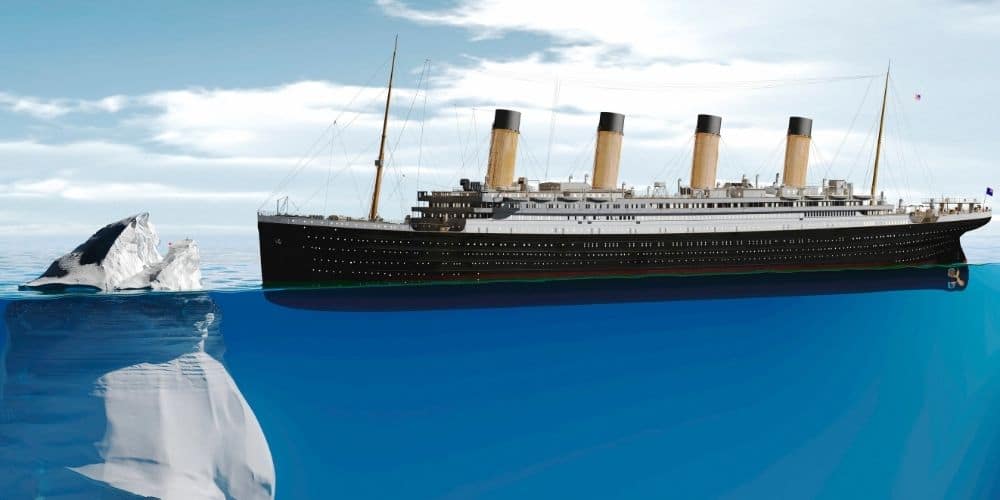
Compare that to Lusitania. From the moment she started to sink, she was under the water completely within just 18 minutes. That’s a seriously fast amount of time for a ship her size. And yet, a higher percentage of people survived the Lusitania than did the Titanic.
The story of the Lusitania is a concerning one, for a number of reasons.
Firstly, she was a civilian ship and yet she was sunk without warning by the German navy. However, she was carrying munitions for the British army, which gave the Germans more incentive to sink her.
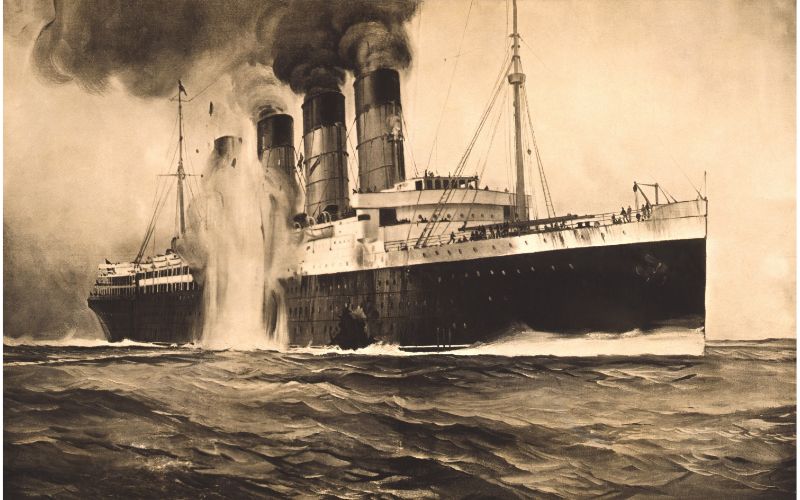
Then there are the conspiracy theories around Britain trying to put the ship in danger – more on that below.
And finally, there was a higher percentage of women and children who lost their lives in the Lusitania sailing compared to the Titanic.
It’s believed that this was due to the time it took for the ship to sink. With everything happening in just 18 minutes, there was no time for the sense of self-preservation to calm down within the passengers.
Whereas with the Titanic, experts believe that there would’ve been enough time for that initial panic to calm down, and for the men to help the women and children into the lifeboats first as a priority (source).
The ships’ legacies
Both the Titanic and Lusitania had major impacts on world history, but for very different reasons.
When the Titanic sank, she famously was not a safe ship, primarily due to the lack of lifeboats. The huge loss of life led to a massive inquest that lasted for years, ultimately overhauling the safety standards of shipping going forward.
If it wasn’t for the sinking of the Titanic, then who knows how long it would’ve taken for shipping safety to be looked at under such a microscope and how many more, smaller tragedies could’ve taken place?
The Lusitania’s legacy is very different but arguably even more important. It was one of the factors that led to the US joining the First World War.
In fact, there have been some, including an intelligence officer in Britain, who believed that Britain had purposefully endangered the Lusitania in order to provoke the Americans into joining the war.
He wrote that Britain purposefully chose not to give the ship an escort, and gave orders which put it more at risk of being attacked by the German navy (source).
Why Titanic is more famous
There are a number of reasons why Titanic is more famous than Lusitania. She was the biggest ship in the world when she sank, she was billed as unsinkable, and it sank with natural causes combined with human error, instead of in wartime conditions.
Remember that Lusitania was the biggest ship in the world when she was built, but by the time she was sunk, she had surrendered that title.
And she was hit by a torpedo during the First World War. Yes, she was the biggest maritime loss during that war, but millions lost their lives due to the conflict in general.
Whereas the Titanic was lost because human mistakes were made. Mistakes that could’ve been avoided, and that were later rectified for all future sailings. It was her maiden voyage too, which makes it more of a dramatic event.
And there was the hubris too – the fact that Titanic was declared to be unsinkable, yet didn’t even complete a single sailing. Both ships were major disasters but there are a number of reasons why Titanic became more famous, even before the 1997 movie was made.
There are more than 10 Titanic Museums in the world. While there is also a Lusitania Museum in Ireland, it’s not to the same scale.
One man survived both
A man named George Beauchamp is believed to be the only person who survived both the Titanic and Lusitania disasters. An urban legend names another man, Frank Tower, as a survivor of both but his existence has not been proven.
George Beauchamp’s story is more well-known and has been told by his family. He was a coal stoker on the Titanic who helped to get people into the lifeboats when she started to sink. He later switched to work for Cunard Line on the Lusitania and was onboard when she sank three years later (source).

Public domain, via Wikimedia Commons
There are rumours of a Frank Tower who survived both, but his tale is considered to be an urban legend. A ‘Frank Tower’ is listed as a passenger on Lusitania, but never as a worker on either ship (source).
Final word
There are a startling number of similarities between the Lusitania and Titanic tragedies, but even more differences. They were different ships, sailed by rival cruise lines, and sank under very different circumstances.
Titanic will always be the more famous disaster, and more lessons were learned from her sinking too. And yet the victims of the Lusitania disaster deserve to be remembered equally.
Related posts:
- Are There Still Bodies In The Titanic?
- Will The Titanic Ever Be Raised?
- Titanic Vs Modern Cruise Ships (Size Comparison)

Jenni Fielding is the founder of Cruise Mummy. She has worked in the cruise industry since 2015 and has taken over 30 cruises. Now, she helps over 1 million people per month to plan their perfect cruise holidays.

